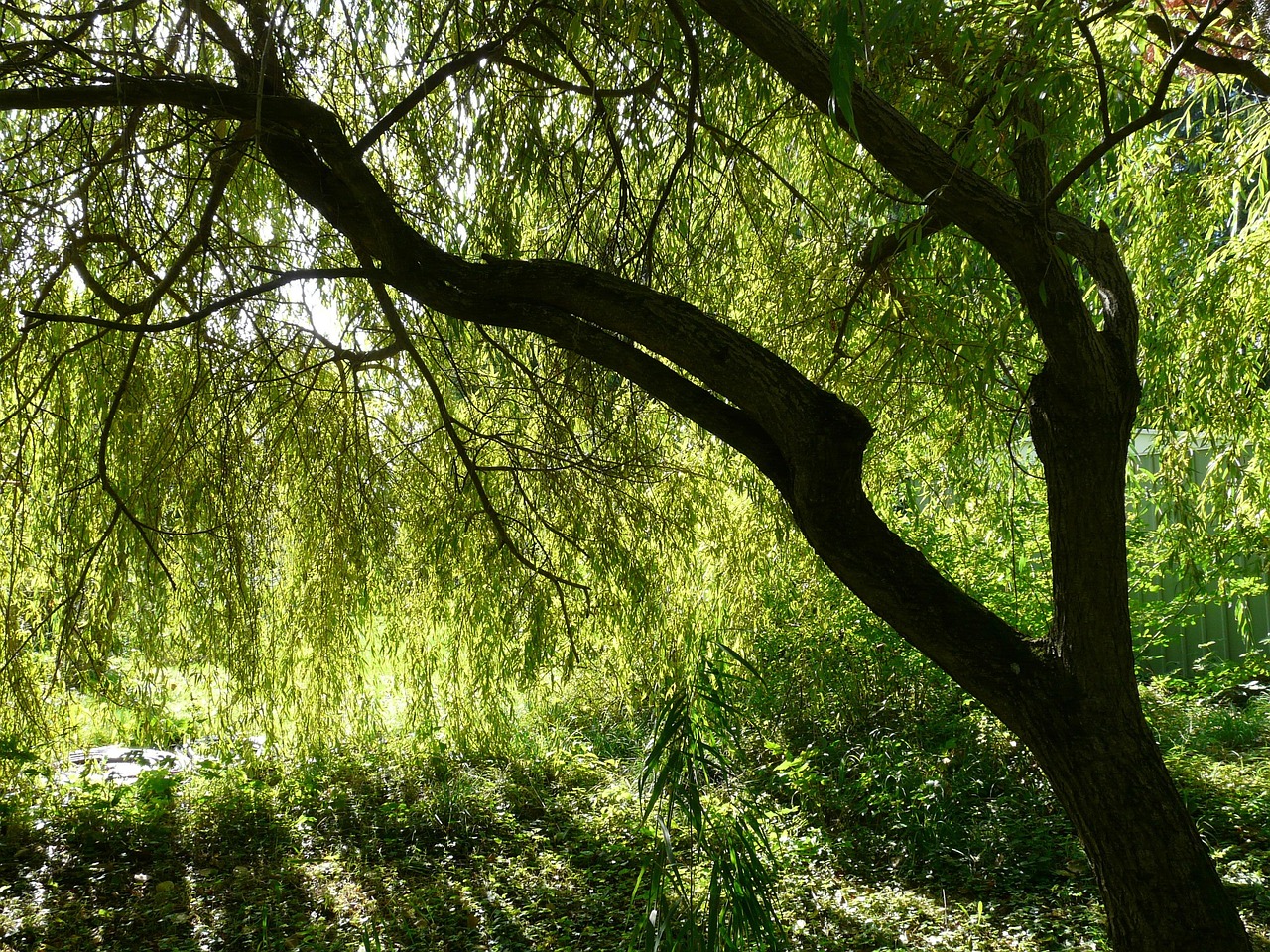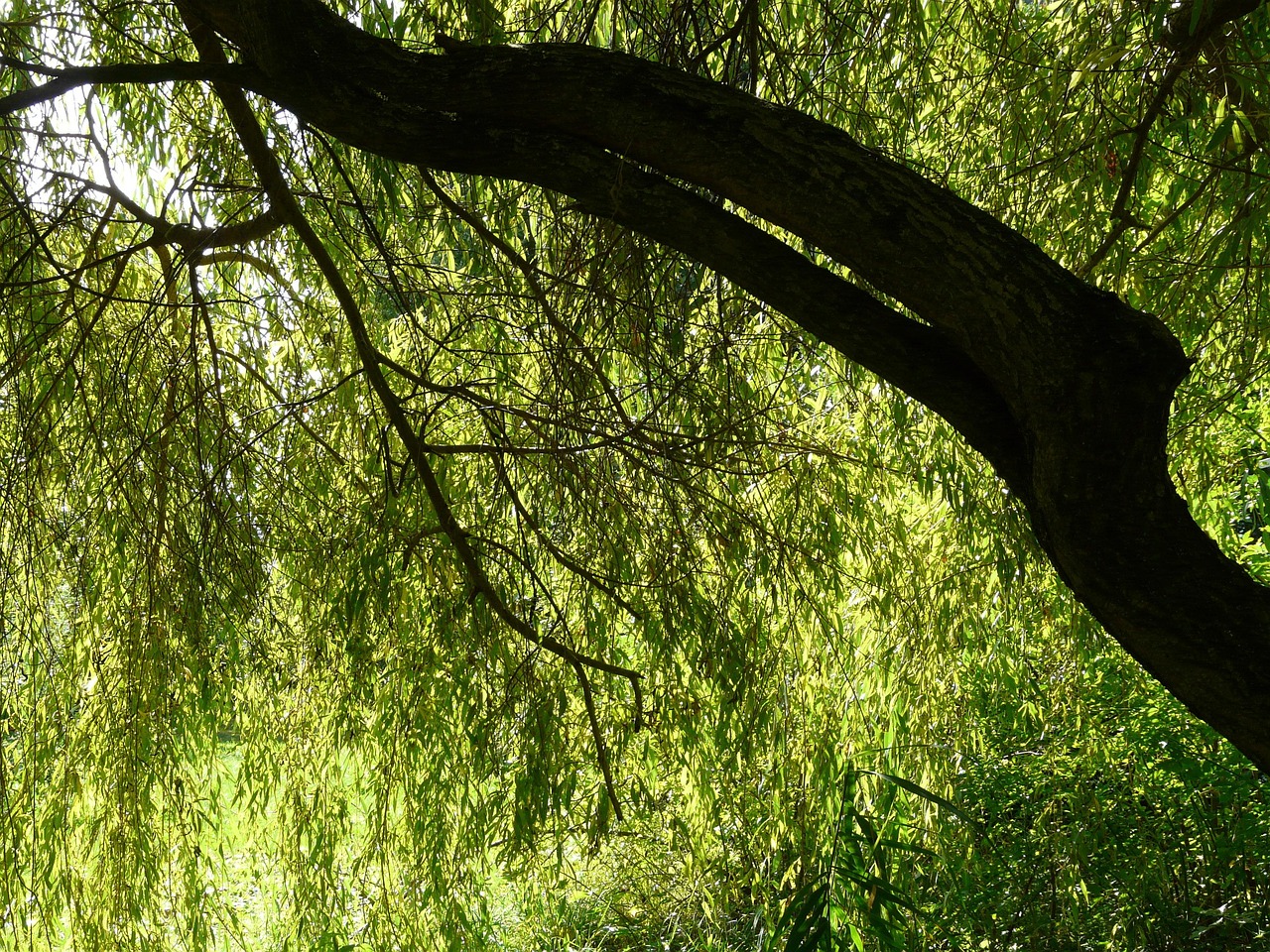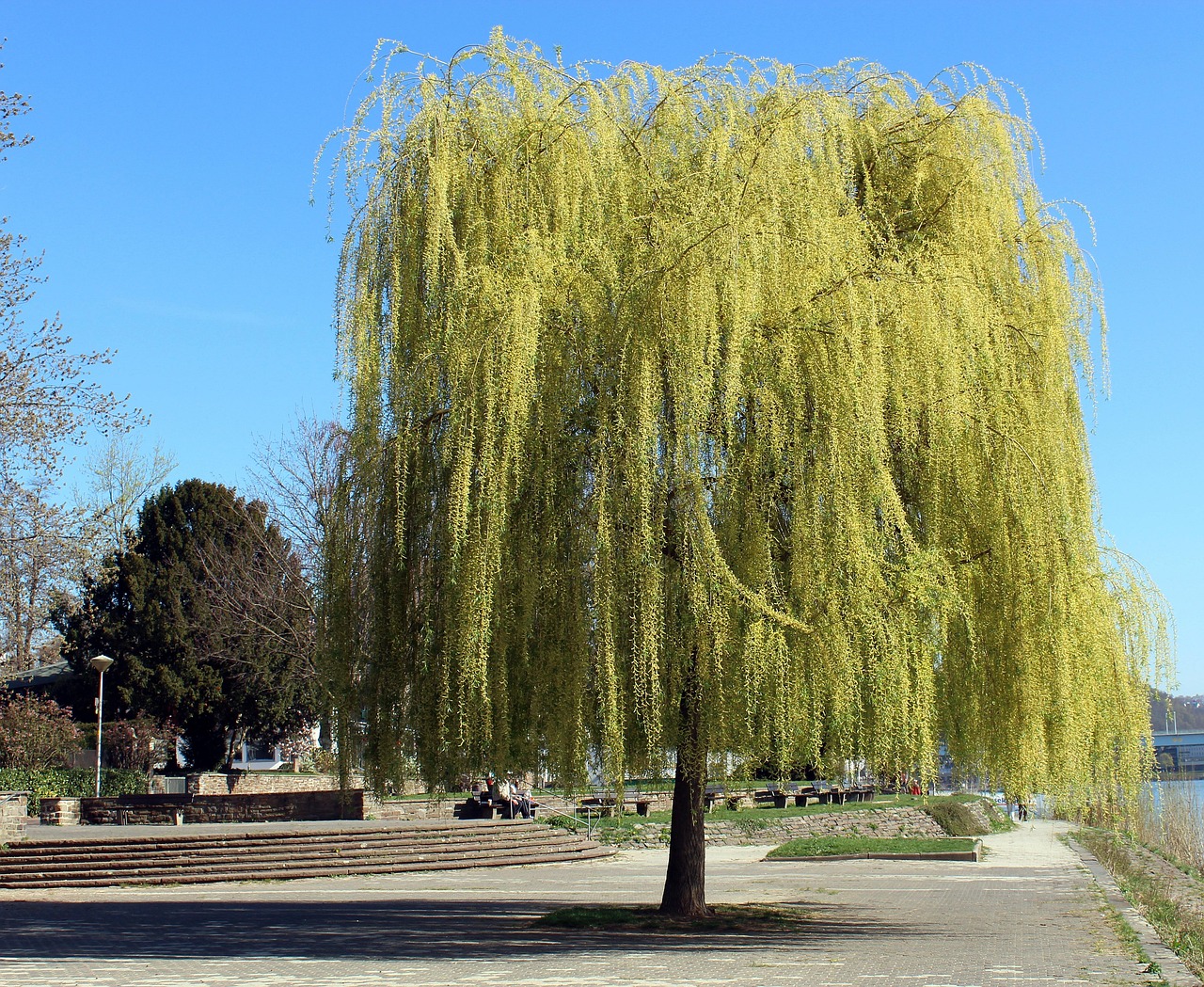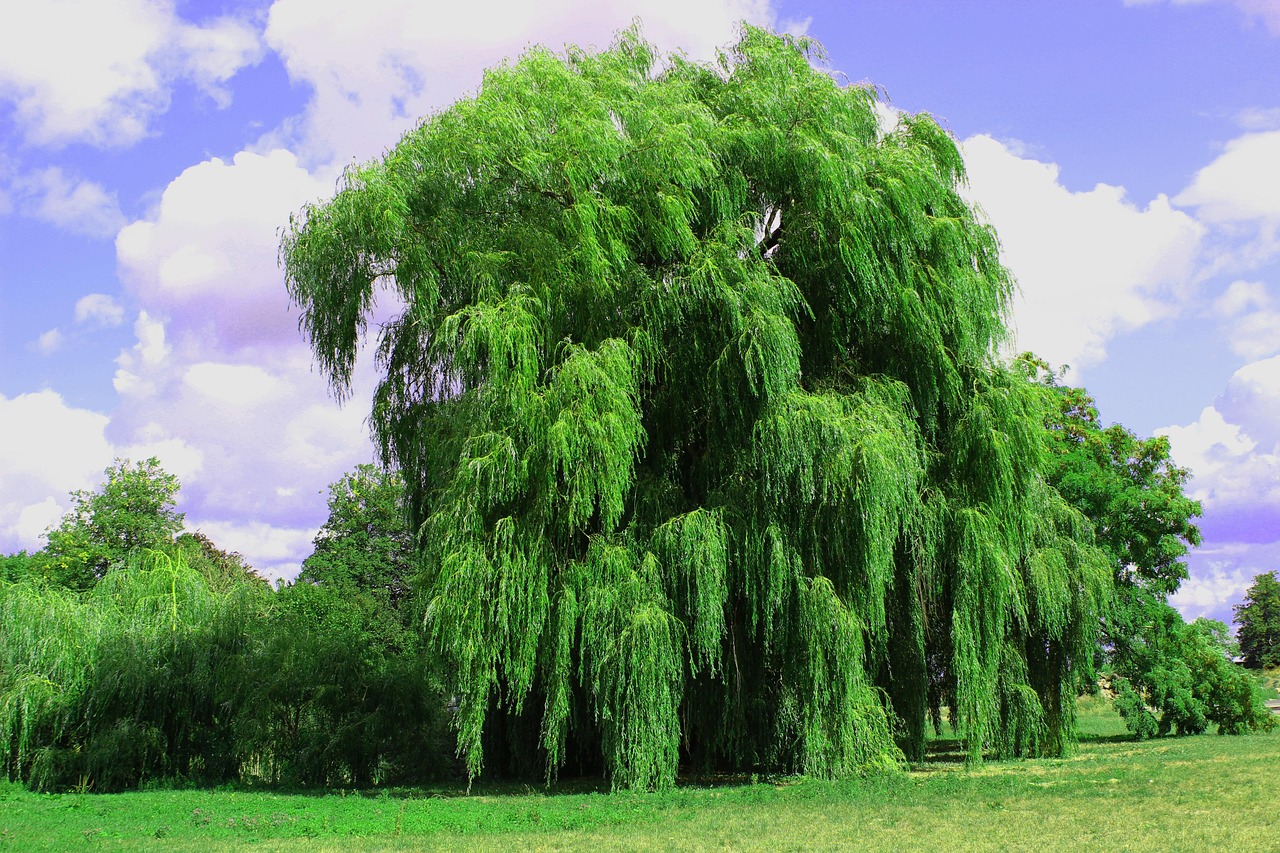Weeping willow trees (Salix babylonica) typically exhibit a fast growth rate, reaching heights of 30 to 50 feet within 10 to 15 years. In pond landscapes, they thrive in moist, well-drained soil and can grow up to 10 to 12 feet annually under ideal conditions. Their extensive root systems help stabilize shorelines and enhance the ecosystem.
Weeping willow trees (Salix babylonica) grow rapidly, typically reaching 10 to 12 feet in height within the first few years. In ideal conditions, they can grow up to 3 to 5 feet per year and may reach heights of up to 30 to 40 feet at maturity, making them a popular choice for pond landscapes.
Understanding Weeping Willows
Weeping willows are known for their graceful, drooping branches and lush foliage. These trees thrive near water sources, making them an excellent addition to pond landscapes. Their rapid growth rate and striking appearance can enhance the visual appeal of any garden or landscape design. The unique characteristics of weeping willows contribute to their popularity among gardeners and landscapers alike.

One of the most distinctive features of the weeping willow is its long, slender branches that cascade downward. This natural form creates a soft, romantic atmosphere in any setting. Additionally, their vibrant green leaves turn a beautiful golden yellow in the fall, providing seasonal color changes that further enhance the landscape.
Growth Conditions
To achieve optimal growth, weeping willows require specific conditions. They flourish in moist, well-drained soil and prefer full sun exposure. Here are some key factors that influence their growth:
- Water Availability: Weeping willows thrive in areas with ample moisture. They naturally grow near rivers, lakes, and ponds.
- Soil Type: They prefer sandy or loamy soils that offer good drainage but retain some moisture.
- Sunlight: Full sunlight for at least six hours a day is essential for healthy growth.
- Temperature: Weeping willows are hardy in USDA Zones 4 through 9, thriving in a range of temperatures.
Growth Rate Details
The growth rate of weeping willows can vary based on environmental conditions and care. Here are some general statistics regarding their growth:

| Year | Height (Feet) | Growth Rate (Feet per Year) |
|---|---|---|
| 1 | 5-6 | 3-5 |
| 2 | 8-10 | 3-5 |
| 3 | 10-12 | 3-5 |
| 5 | 20-25 | 4-6 |
| 10 | 30-40 | 3-4 |
This table illustrates a typical growth pattern for weeping willows over their early years. The first three years show impressive growth, which eventually stabilizes as the tree matures. While they can grow quickly, proper care—such as regular watering and pruning—is essential for maintaining their health and appearance.
Caring for Weeping Willows
To ensure that weeping willows thrive in pond landscapes, it is important to care for them properly. Here are some tips for maintaining healthy growth:
- Watering: Keep the soil consistently moist, especially during dry spells. Deep watering once a week is recommended.
- Fertilization: Applying a balanced fertilizer in early spring can promote healthy growth.
- Pruning: Regular pruning helps maintain shape and encourages new growth. Remove dead or diseased branches as needed.
- Pest Control: Monitor for common pests such as aphids or caterpillars and take appropriate action if necessary.
Caring for weeping willows not only enhances their growth but also contributes to the overall beauty of the pond landscape. By providing the right conditions and care, these trees can thrive and create a stunning focal point in any garden setting.

Benefits of Weeping Willows in Pond Landscapes
Weeping willows are not just visually appealing; they also provide several ecological and practical benefits when planted near ponds. Understanding these advantages can help gardeners make informed decisions about incorporating this species into their landscape designs.
Ecological Contributions
Weeping willows play a crucial role in enhancing the ecosystem of pond landscapes. Here are some ecological benefits they offer:
- Habitat Creation: The drooping branches provide shelter for various wildlife, including birds and insects. This can help support local biodiversity.
- Erosion Control: The extensive root system helps stabilize the soil around ponds, reducing erosion caused by water movement.
- Water Filtration: Weeping willows can help filter pollutants from runoff, improving water quality in ponds.
- Shade Provision: Their large canopy creates shade, which can lower water temperatures and benefit aquatic life.
Aesthetic Appeal
The beauty of weeping willows enhances the visual appeal of any pond landscape. Their unique shape and graceful movements add elegance and charm. Here are some aesthetic benefits:

- Visual Focal Points: Their striking form draws the eye, making them perfect for focal points in gardens.
- Seasonal Color Changes: The vibrant green leaves in spring and summer transition to golden yellow in fall, providing year-round interest.
- Reflection in Water: The tree’s reflection on the surface of the pond creates picturesque scenery, ideal for photography and relaxation.
Planting Weeping Willows
Planting weeping willows requires careful consideration to ensure successful growth. Here are essential steps to follow when planting these trees in pond landscapes:
Selecting the Right Location
Choosing the right location is critical for the health of weeping willows. Consider the following factors:
- Proximity to Water: Plant weeping willows within a few feet of the pond to provide the moisture they need.
- Avoiding Overhead Utilities: Ensure that there are no power lines or other utilities above the planting site, as their height can interfere with overhead structures.
- Sufficient Space: Allow enough space for the tree to grow without interfering with other plants or structures.
Planting Steps
Follow these steps for successful planting:
- Prepare the Soil: Loosen the soil in a wide area around the planting site to promote root growth.
- Dig a Hole: Create a hole that is twice as wide as the tree’s root ball and just as deep.
- Place the Tree: Position the tree in the center of the hole, ensuring that the top of the root ball is level with the soil surface.
- Backfill the Hole: Fill in around the roots with soil, gently tamping it down to eliminate air pockets.
- Water Thoroughly: Water the newly planted tree deeply to help settle the soil and provide moisture.
Potential Challenges
While weeping willows offer many benefits, they can also present certain challenges. Being aware of these challenges can help gardeners prepare for potential issues:
- Pest Infestations: Weeping willows can attract pests like aphids and caterpillars. Regular monitoring is essential to address infestations promptly.
- Disease Susceptibility: They may suffer from diseases such as willow scab or crown rot if conditions are not ideal. Maintaining proper care can help mitigate these risks.
- Root Spread: Their aggressive root systems may invade nearby plumbing or foundations. Planting them at a safe distance from structures is advisable.
Understanding these potential challenges allows gardeners to create effective management strategies, ensuring that weeping willows thrive in their pond landscapes while minimizing any adverse effects. Proper planning and care can lead to a beautiful and healthy addition to any garden environment.
Weeping Willow Varieties
Not all weeping willows are the same. Different varieties can have distinct features that make them suitable for various landscape designs. Understanding these varieties can help gardeners choose the right type for their pond landscapes.
Common Varieties
Here are some of the most popular weeping willow varieties:
- Salix babylonica: This is the classic weeping willow, known for its long, cascading branches and broad canopy. It is often found in gardens and parks.
- Golden Weeping Willow (Salix alba ‘Tristis’): This variety features a striking golden bark that adds a unique touch to landscapes. Its leaves are also vibrant green.
- Weeping Osier Willow (Salix viminalis): This species is characterized by its slender, flexible branches, making it ideal for basket weaving and other crafts.
- Scarlet Curls Weeping Willow: Known for its twisted branches and unique appearance, this variety provides visual interest throughout the year.
Choosing the Right Variety
When selecting a variety, consider the following factors:
- Growth Habit: Some varieties grow taller than others. If height is a concern, select a shorter variety.
- Climate Adaptability: Ensure the chosen variety is suitable for your USDA hardiness zone to promote healthy growth.
- Aesthetic Preferences: Consider the visual characteristics of each variety and how they fit into your overall landscape design.
Weeping Willows and Water Management
Weeping willows have a strong relationship with water, making them particularly well-suited for pond landscapes. Their growth habits and water needs can significantly impact water management practices in your garden.
Water Usage
The water consumption of weeping willows is considerable. Here are some key points to consider:
- High Water Demand: Weeping willows can absorb large amounts of water, which makes them ideal for managing excess moisture in wet areas.
- Drought Tolerance: While they thrive near water, mature weeping willows can tolerate short periods of drought, adapting their growth accordingly.
- Moisture Retention: The trees help retain moisture in the surrounding soil, benefiting nearby plants that require consistent humidity.
Irrigation Considerations
If you are planting weeping willows near ponds, consider the following irrigation tips:
- Natural Irrigation: Planting near a pond allows the tree to draw moisture directly from the water source.
- Supplemental Watering: During dry spells, provide additional water to young trees until their root systems are well-established.
- Avoid Overwatering: Be mindful of water levels to prevent root rot, especially in areas with poor drainage.
Companion Planting with Weeping Willows
Integrating weeping willows with other plants can enhance the biodiversity and aesthetics of pond landscapes. Choosing compatible plants is essential for creating a harmonious environment.
Compatible Plants
Here are some plants that pair well with weeping willows:
- Aquatic Plants: Species like water lilies and cattails thrive in wet conditions and complement the willow’s graceful form.
- Perennials: Plants such as astilbe and hostas add color and texture near the base of the tree, benefiting from the shade it provides.
- Shrubs: Varieties like hydrangeas or azaleas can create a lush underlayer that enhances the visual appeal of the area.
Avoiding Incompatible Species
Certain plants may not thrive alongside weeping willows due to their specific needs. Avoid planting:
- Drought-Tolerant Plants: Species that require minimal moisture may struggle in the damp conditions preferred by willows.
- Shallow-Rooted Plants: These may compete with the willow’s extensive root system for nutrients and water.
By carefully selecting companion plants, gardeners can create a vibrant and healthy ecosystem around weeping willows in pond landscapes. This approach not only enhances beauty but also supports local wildlife and promotes overall garden health.
Maintaining the Health of Weeping Willows
In addition to selecting the right planting location and companion plants, ongoing maintenance is crucial for ensuring the health and vitality of weeping willows in pond landscapes. Regular care can help prevent disease and promote robust growth.
Seasonal Care Practices
Adapting care practices to seasonal changes can significantly benefit weeping willows. Here are some seasonal tips:
- Spring: As the weather warms, inspect the tree for any signs of damage or disease. Apply a balanced fertilizer to promote new growth.
- Summer: Keep the soil consistently moist, especially during hot spells. Prune any dead or damaged branches to encourage healthy growth.
- Fall: Rake away fallen leaves to prevent diseases. This is also a good time to assess the tree’s overall health and make plans for winter care.
- Winter: While weeping willows are hardy, protect young trees from extreme cold by applying mulch around the base to insulate the roots.
Pest and Disease Management
Monitoring for pests and diseases regularly can help maintain the health of weeping willows. Here are some common issues and management strategies:
- Aphids: These tiny insects can cause leaf curling and stunted growth. Treat infestations with insecticidal soap or neem oil.
- Caterpillars: Inspect leaves for caterpillar damage. Handpicking them or using appropriate pesticides can help control populations.
- Willow Scab: This fungal disease manifests as dark lesions on leaves. Improve air circulation and remove affected leaves to manage outbreaks.
- Crown Rot: Ensure proper drainage around the tree’s base to prevent this disease, which is often caused by overly wet conditions.
Weeping Willows in Landscape Design
Integrating weeping willows into landscape design involves more than just planting them near ponds. Thoughtful placement and complementary elements can enhance their beauty and functionality.
Design Considerations
When designing landscapes that include weeping willows, consider the following:
- Focal Points: Use weeping willows as focal points in your garden. Their unique shape and size can draw attention and create visual interest.
- Layering Plants: Combine different plant heights around the willow to create depth. Taller plants can be placed behind, while shorter perennials can frame the base.
- Pathways: Design pathways that lead to and from the willow, encouraging exploration of the surrounding landscape.
- Seating Areas: Create seating areas under the canopy of the willow for shaded relaxation spots, enhancing the usability of your garden space.
Final Thoughts
Weeping willows are a beautiful and functional addition to pond landscapes, offering ecological benefits, aesthetic appeal, and unique growth characteristics. Their rapid growth rate makes them ideal for quickly establishing visually striking environments. By understanding their needs for water, sunlight, and soil conditions, gardeners can ensure these trees thrive in their settings.
The selection of compatible companion plants further enhances the beauty and biodiversity of landscapes featuring weeping willows. Regular maintenance practices, including seasonal care and pest management, are vital for keeping these trees healthy and vibrant.
Incorporating weeping willows into landscape designs not only transforms outdoor spaces but also creates serene environments that support local wildlife. For those looking to make a lasting impact in their gardens, weeping willows offer both beauty and functionality that can enrich any pond landscape.
By following the guidance provided throughout this article, gardeners can successfully cultivate weeping willows that flourish, creating stunning landscapes that are both beautiful and beneficial for years to come.
